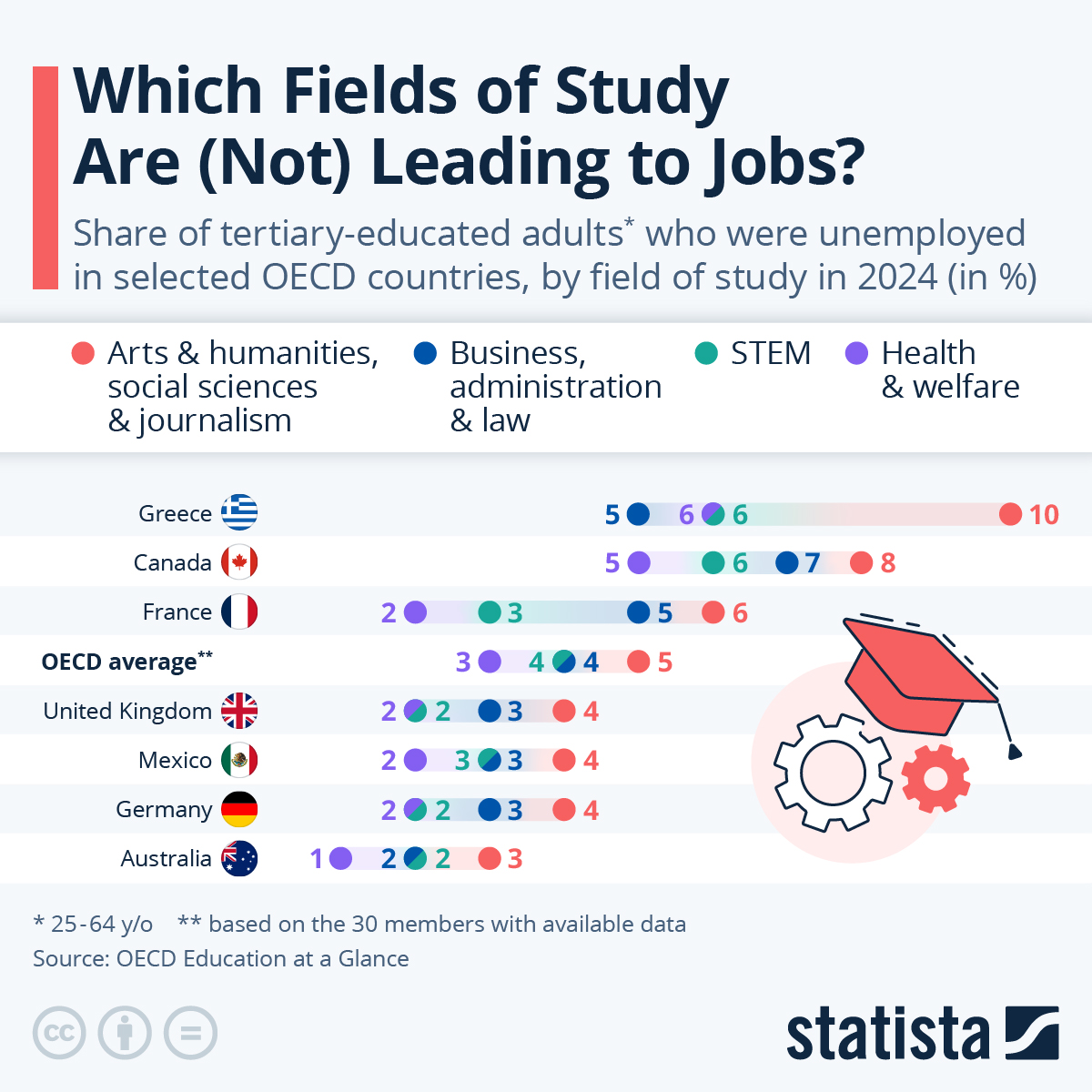Even highly educated graduates are finding it difficult to secure work in today's challenging economic climate. This means that it is increasingly important that young people acquire skills through education that align with labor market demands.
A new OECD report, Education at a Glance, explores this issue in depth.
As Statista's Anna Fleck shows in the infographic below, the report finds that while tertiary education generally leads to higher employment rates, outcomes tend to vary by field of study. In 2024, IT graduates had the highest average employment rate across OECD countries at 90 percent, followed by those in engineering, manufacturing and construction at 89 percent. Meanwhile, graduates in arts and humanities, social sciences and journalism had the lowest rates at 84 percent. The data covers employment among adults aged 25 to 64.
You will find more infographics at Statista
Although the differences may seem small, analysts note the pattern is consistent across countries.
For instance, in the United Kingdom, Mexico, Germany and Australia, unemployment rates for graduates in health and welfare hovered around just one-two percent, indicating that there is currently a strong demand. STEM graduates also had similarly low unemployment.
In contrast, in Greece, business, administration and law graduates saw slightly better employment outcomes than those in arts or STEM fields, reflecting local market conditions.
The report underscores that having any sort of tertiary education tends to improve job prospects. But it also highlights a persistent opportunity gap, as in all countries studied, students from disadvantaged backgrounds were far less likely to reach higher levels of education than those from more advantaged backgrounds. Analysts argue that improving access to education across different socio-economic backgrounds is critical, not only to strengthen social mobility and reduce inequality but also to increase the pool of skilled workers at a time of skills shortage across multiple sectors.
Still, the data shown in the infographic above comes with a caveat.
Although the research was conducted as recently as last year, the employment landscape, particularly in the tech industry, is evolving rapidly due to the widespread adoption of AI. This shift is especially affecting those just entering the workforce. For example, as companies increasingly rely on AI coding assistants, the demand for roles such as junior software engineers is decreasing. And although new technologies have historically eventually created new types of jobs, today’s graduates are being caught in a transitional period, facing fewer immediate openings as the market adapts.
Loading recommendations...
